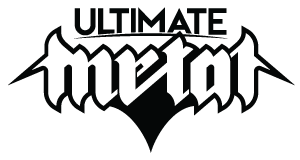Dak
mentat
I read that and thought it was really interesting, but didn't share it because I figured there wasn't much to it (I don't feel qualified to say one way or another). That's cool that you think it actually does mesh with Austrian theory.
There is something that Orrell doesn't get quite right though, and I feel it's worth mentioning. It has to do with his association of consciousness in quantum theory and behavioral economics.
I have done no research on quantum anything, and I'm skeptical of its invocation for whatever "wow cool new thing!" that is occasionally offered. There obviously isn't a perfect relationship to the Austrian School, but there were points of intersection beyond his vague reference to "heterodox theories". I can summarize them in the following:
1. The importance of money in the discussion of economics, particularly the problem of central banking, and how the subject is completely avoided by mainstream economics:
Even stranger, though, is that in answering these basic questions money hardly seems to be mentioned – despite the fact that one would think money is at the heart of the subject. (Isn’t economics about money? Aren’t prices set by using money?) If you look at those textbooks, you will find that, while money is used as a metric, and there is some discussion of basic monetary plumbing, money is not considered an important subject in itself. And both money and the role of the financial sector are usually completely missing from economic models, nor do they get paid lip service. One reason central banks couldn’t predict the banking crisis was because their models didn’t include banks.
Economists, it seems, think about money less than most people do: as Mervyn King, the former governor of the Bank of England, observed in 2001: ‘Most economists hold conversations in which the word “money” hardly appears at all.’ For example, the key question of money-creation by private banks, according to the German economist Richard Werner, has been ‘a virtual taboo for the thousands of researchers of the world’s central banks during the past half century’.
2. Models being based on completely fictional ideas (in addition to ignoring various important real things).
To sum up, the key tenets of mainstream or neoclassical economics – including such things as ‘utility’ or ‘demand curves’ or ‘rational economic man’ – are just made-up inventions, no more real than the crystalline spheres that Medieval astronomers thought suspended the planets. But real things like money are to a remarkable extent ignored.
3. Price discovery
Similarly, money’s use in transactions is a way of attaching a number (the price) to the fuzzy and indeterminate notion of value, and therefore acts as a kind of quantum measurement process. When you sell your house, you don’t know exactly how much it is worth or what it will fetch; the price is revealed only at the time of transaction.
4. The economy being the emergent process of individual transactions by heterogeneous actors with fluctuating (and ordinal) value structures:
So how to define this new, quantum-inspired economics? It is not the science of scarcity, and it certainly isn’t the science of happiness (which is not to say these things aren’t important); rather, it can be defined as the study of transactions that involve money. Instead of assuming that market prices represent the intersection of made-up curves and optimise utility, prices are seen as the emergent result of a measurement procedure. Rather than modelling the economy as a kind of efficient machine, it makes more sense to use methods such as complexity theory and network theory that are suited to the study of living systems, and which as mentioned above are now being adopted in economics. One tool is agent-based models, where the economy emerges indirectly from the actions of heterogeneous individuals who are allowed to interact and influence each other’s behaviour, mirroring in some ways the collective dance of quantum particles. Agent-based models have managed to reproduce for example the characteristic boom-bust nature of housing or stock markets, or the effect of people’s expectations on inflation. Meanwhile, network theory can be used to illustrate processes and reveal vulnerabilities in the complex wirings and entanglements of the financial system.
Edit: I agree that behavioral economics so far may be better than more traditional mainstream economics, but only in so far as it turns its view to the actor to some degree. Overall it is oversold.

